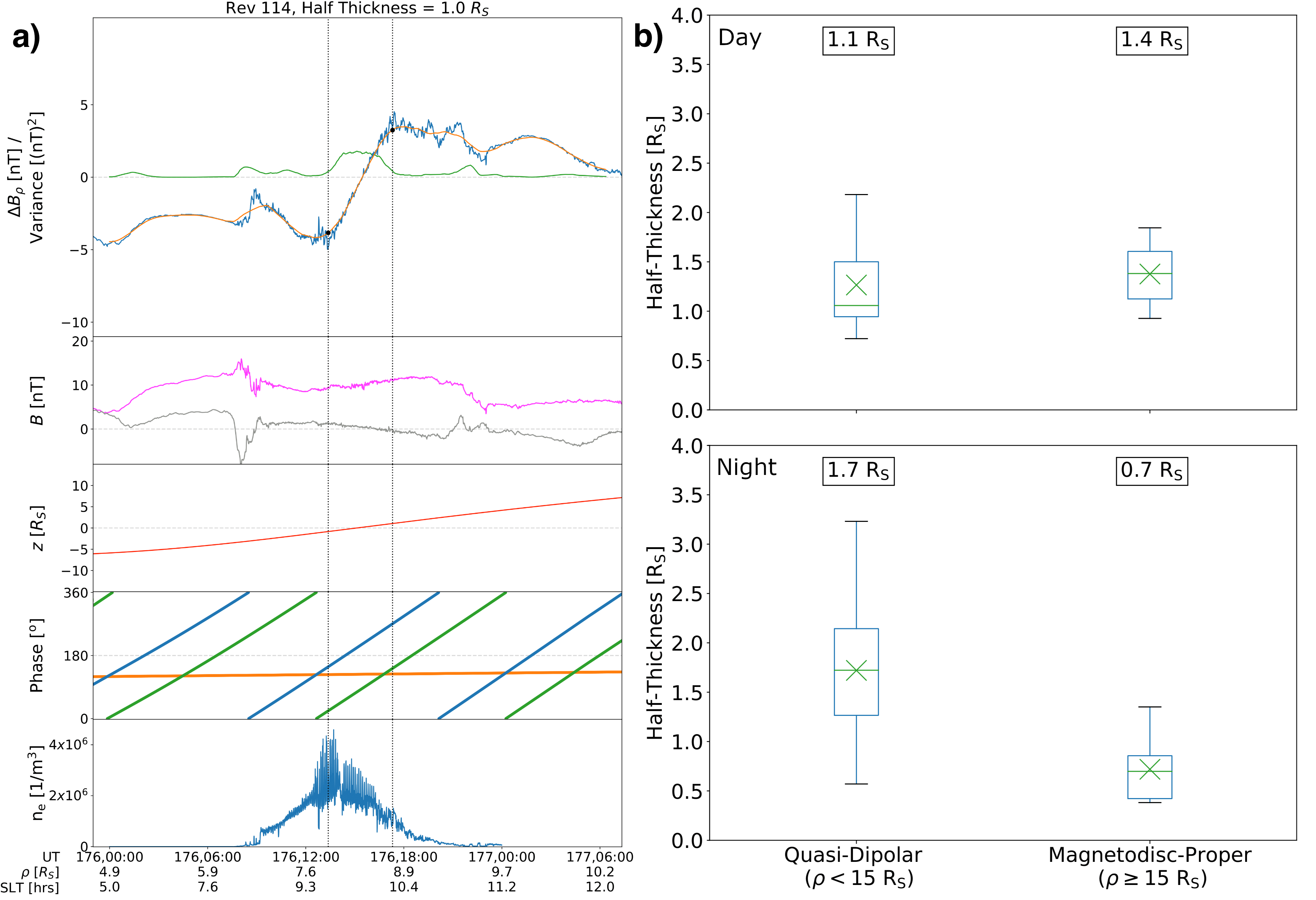MIST
Magnetosphere, Ionosphere and Solar-Terrestrial
Determining the Nominal Thickness and Variability of the Magnetodisc Current Sheet at Saturn
By Ned Staniland (Imperial College London)
The presence of an internal plasma source (the moon Enceladus) coupled with the rapid rotation rate of Saturn (~10 hrs) results in an equatorially confined layer of plasma that stretches the dipolar planetary magnetic field into what is known as a magnetodisc. This structure is found at both gas giants and so understanding its formation and how it responds to different drivers reveals the dynamics of these magnetospheres and how the geologically active moons affect them. We explore the thickness of the equatorial current sheet that is associated with the stretched field geometry. We use 66 fast, high inclination crossings of the current sheet made by Cassini, where a clear signature in the magnetic field data (Figure 1a shows a sharp reversal in the radial field during the crossing) allows for a direct determination of its thickness and offset.
We find that the current sheet is thinner than previously calculated but identify several sources of spatial and temporal variability. For instance, the current sheet is 50% thicker in the nightside inner magnetosphere compared to the dayside (Figure 1b). This is consistent with the presence of a noon‐midnight convection electric field at Saturn that produces a hotter plasma population on the nightside, resulting in a thicker current sheet. However, the current sheet becomes thinner with radial distance on the nightside, while staying approximately constant on the dayside (Figure 1b), reflecting the solar wind compression of the magnetosphere and the stretching of the field in the tail. Some of the variability is well characterized by the planetary period oscillations (PPOs). But we also find evidence for non‐PPO drivers of variability, highlighting the interplay between different drivers that shape the Saturnian system.
This work shows the necessity for considering the variable structure of the largest current system in the Saturnian magnetosphere, which is essential particularly for future modelling efforts.

Figure 1a) shows Cassini magnetic field data during a current sheet crossing. We determine the current sheet boundaries by identifying spikes in the variance of the cylindrical radial field component (green line, top panel). Figure 1b) shows box plots calculated from the 66 crossings that highlight the radial profile and day-night asymmetry of the current sheet thickness.
For more information, please see:
Staniland, N. R., Dougherty, M. K., Masters, A., & Bunce, E. J. (2020). Determining the nominal thickness and variability of the magnetodisc current sheet at Saturn. Journal of Geophysical Research: Space Physics, 125, e2020JA027794. https://doi.org/10.1029/2020JA027794